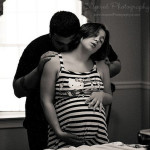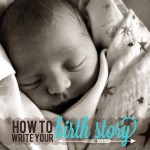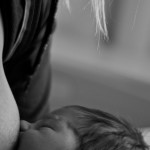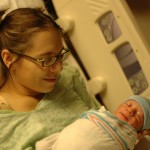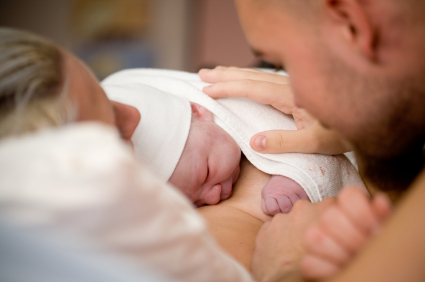 My client had been laboring in the tub for a while. As each contraction came, she would sit up and get up on all fours, while her partner would apply pressure to her back. I was leaning on the side of the tub, and her partner was behind her with his legs and feet in the whirlpool to get better leverage for the back support she so desperately needed. Then it happened; as my client labored through another contraction, her water broke. You could see the extra movement of fluid in the water to confirm what my client was experiencing. Once the contraction began to subside, she laid back between her partner’s legs as he sat on the back of the tub. She closed her eyes and rested her head on one of his legs as the amniotic fluid continued to flow from her as seen by the blood that also began to swirl around the tub. That is when I took notice of her partner sitting there with the weight of my client’s head on his legs, one hand stroking the hair on her head, while his other hand embraced hers, but more importantly was the look in his eyes. His eyes scanned the tub as blood and other tidbits began to swirl around. His eyes were open so wide it was as if you would be able to see his thoughts if you looked long enough. His eyes, reminiscent of that of a child in need of rescue, of comfort, of direction, looked at mine and I mouthed, “It’s okay” and gestured that he could remove his feet and legs from the water.
My client had been laboring in the tub for a while. As each contraction came, she would sit up and get up on all fours, while her partner would apply pressure to her back. I was leaning on the side of the tub, and her partner was behind her with his legs and feet in the whirlpool to get better leverage for the back support she so desperately needed. Then it happened; as my client labored through another contraction, her water broke. You could see the extra movement of fluid in the water to confirm what my client was experiencing. Once the contraction began to subside, she laid back between her partner’s legs as he sat on the back of the tub. She closed her eyes and rested her head on one of his legs as the amniotic fluid continued to flow from her as seen by the blood that also began to swirl around the tub. That is when I took notice of her partner sitting there with the weight of my client’s head on his legs, one hand stroking the hair on her head, while his other hand embraced hers, but more importantly was the look in his eyes. His eyes scanned the tub as blood and other tidbits began to swirl around. His eyes were open so wide it was as if you would be able to see his thoughts if you looked long enough. His eyes, reminiscent of that of a child in need of rescue, of comfort, of direction, looked at mine and I mouthed, “It’s okay” and gestured that he could remove his feet and legs from the water.
This memory of one of the births I attended gives me insight into the fact that even for partners, labor can be complex. That partner, husband or significant other has the weight of being the main one to help the mom remember all those things they learned in their childbirth education class, what they read in books and the innumerable amount of information they found on the Internet. What many don’t anticipate or prepare for is their own emotional part that plays out in labor. Much time is spent on determining what role they will play once labor is upon them. Will they be the hands-on type, an advocate or in the background for an extra set of hands? Many times you don’t know how it will play out until the big day arrives.
Now that the big day is here and the partner is falling into the position he will play as part of the birth story, where does that leave his emotional state? Many times you see pictures of partners crying after baby is born, sometimes directly after or maybe once the baby is in their arms. But, not much emphasis is put on the partner’s emotional state throughout the labor.
Some feelings that a partner might experience during labor include, but are not limited to:
- Fear
- Anxiety
- Intimidation
- Alienation
- Stress
- Confusion
- Loneliness
Watching a woman give birth can be traumatic for the birth partner. He may be overwhelmed by seeing his partner gripped by pain. When negative emotions are not dealt with, they can have potential long-term effects on future pregnancies and births. Doulas encourage mothers to process their births because of the healing effects it has for the mother. Well, I suggest the partners also process what they experienced, even if the birth was one of great joy and excitement.
One way to help with possibly avoiding some of these negative emotions that could have a harmful effect on labor is to hire a doula. It is not that she will guard you from it, but she can help guide you through situations that could cause some of these emotions. A doula is there to help both the mother and the partner, and there are instances where it means emotional help. A doula helps the parents to make sure they understand the birth process, that they are being heard by medical personnel, to navigate through questions and concerns they have, and to help create as positive birth experience as possible. This includes being attentive to the partner also, without neglecting the mother of course. I have found, in my experience, that when the partner has support himself, he outshines the expectations (spoken and unspoken) that were placed on him.
Deborah is a mother or four (ages 14, 2 and 3-month-old twins), a doula and a wife of 15 years. Deborah is currently breastfeeding, co-sleeping and baby wearing her twins, as she did with her previous two children. She has worked at a not-for-profit pregnancy help center, started a local birth networking group and mentored other doulas throughout her career. Her ultimate goal is to attend medical school to work as an obstetrics and gynecological medical doctor.

